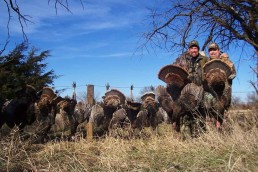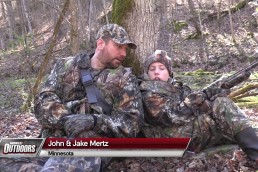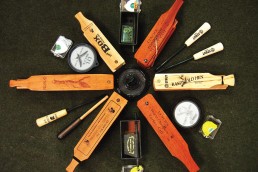The Famous Hoefgen Turkey Battlefield Tale
SHARE THIS POST
An historic account of the event in southeast Kansas
… It’s late December: hours before first light. It’s cold, very cold. The time is near as our company leader goes over last-minute strategies as we walk in place in a feeble attempt to stay warm.
Our division has assembled in a field preparing departure from the safe, warm confines of camp to go into battle. Following an old roadbed to the northwest, we stride with the sound of brittle mud crunching under every step as we march toward the battleground. On this frigid, moonless morning, labored breathing creates steam rising in the cast of dim headlamps as we approach a low-water river crossing.
No one speaks, as the roar of turbulent water grows ever louder somewhere in the darkness in front of us.
We have to cross the river to reach the preplanned forward position, while others will remain on this side of the river. I shift the weight of my pack and weapon and push forward into the deep and fast current. The current is strong; to keep balance, I shuffle my feet slowly, keeping my boots close together, only moving mere inches at a time.
In addition to fighting the fast current, I have to work around a fallen tree wedged in the old slab somewhere below the river surface. Once safely on the other side, I breathe a sigh of relief, but others have to cross behind me—one can only hope that no one misplaces a step and disappears forever beneath the thunderous icy waters rushing below.
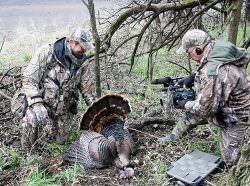
Once on the opposite riverbank, we march toward the south, breaking ice from our pant legs as we go. We follow the winding river channel for about a mile, then turn west and enter a large patch of timber.
We are now close to the enemy encampment. In a low whisper, our patrol leader finalizes plans. From here, it is lights out: no talking, only hand signals. Everyone checks their gear to eliminate any misplaced sounds or rattling of gear.
We slowly move forward through brushy timber to the edge of a field to set up positions along a narrow gap with the river on both sides. This planned location will “channel” the enemy much closer to our vastly outnumbered troops, reminiscent of Persian armies marching toward the Spartan “300.”
Once our troops are hidden in position, I move on alone into the darkness as an advance scout, as well as forward observer. I struggle with the weight of my gear as I diagonally cut across the uneven frozen ground, finally making my way safely to a narrow tree line on the other side.
Through the pre-dawn light, I barely make out another strip of trees about 100 yards closer to the enemy position. I should try to get closer—follow the tree line to where the field turns west and hide in a brush-laced ditch facing the enemy position.
Are you enjoying this post?
You can be among the first to get the latest info on where to go, what to use and how to use it!
But just as I turn to make my move, I hear voices, low talking from the enemy encampment; I will have to set up right here, right now.
At first light, I can clearly see the south tree line across the field, but nothing else. Then, I plainly hear the sound of troops gathering farther to the right and around a bend in the field.
Then it begins: The unmistakable sound of a determined advancing army. The chanting from the ranks is deafening as I see the first line of troops marching down the field and toward our position.
It is as if I am a forward observer in some ancient war, as I watch the massive enemy ranks march toward our position. The field is full as far as I can see, around to the right and out of site.
From my brush-covered hidden position, with eyes low to the ground and without turning my head, it is clear I’m surrounded, by at least 200 of the enemy and scores of others that have already passed my position. I am not to fire upon the enemy; I am to let them pass and march toward our entrenched front lines silently awaiting their approach in the narrow corridor.
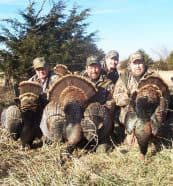
I’m startled at the first shot. Many of the enemy is very close, almost stepping on me. When the shooting begins, I now know the advancing ranks have entered the pinch point—and the battle begins.
Line after line of chanting enemy troops move forward, but suddenly, there is chaos within their ranks; the tide of battle is changing in our favor.
It is time for me to shoulder my weapon and join the fight as the retreating enemy confuses the oncoming mass of troops. I am determined to hold my position, as wave after wave descends upon me. As quickly as it began, it is over, as I watch the last of the enemy troops quickly retreating to the south.
As the smoke clears and the last of the enemy disappear in full retreat, I gather my gear and meet my comrades in arms on the now-empty battlefield. We are proud, as on this day, we did not permit a determined enemy to overtake our position to break our line of defense. Our plan worked well; we held our ground and we will once again face the enemy on the battlefield on yet another day.
Video of this hunt!
When you finish reading this, head on over to our blog to watch a great, extended video produced on this very hunt.
Ray Eye is a MidWest Outdoors hunting instructor. He was raised in the turkey-rich hills of the Missouri Ozarks, and is considered the dean of America’s professional turkey hunters. It’s less widely known that he is an expert hunter for many other species. Eye has produced an online course, “Calling is Everything,” that details how to call turkeys at any season of the year. Find it at eyesontheoutdoors.com.
MWO
SHARE THIS POST
Did you enjoy this post?
You can be among the first to get the latest info on where to go, what to use and how to use it!
Ray Eye
Ray Eye is an award-winning outdoor communications giant. Eye has a huge following with writing, radio, television and national seminars. This Missouri native is a Missouri Conservation Communicator of the Year, NWTF national Communicator of the Year and was inducted into the “Legends of the Outdoors” National Hall of Fame.
